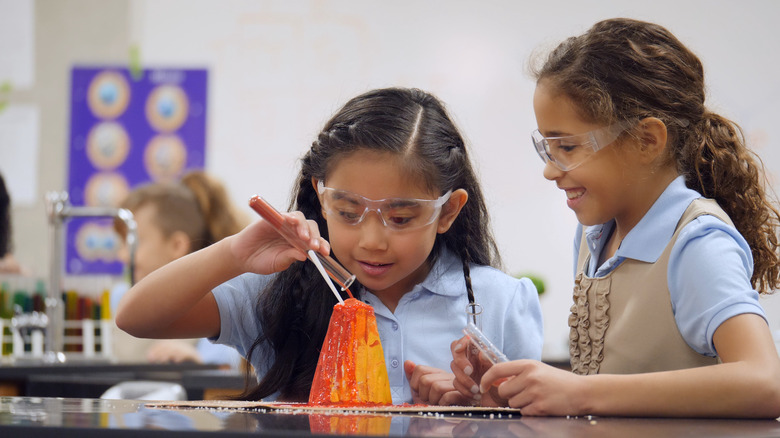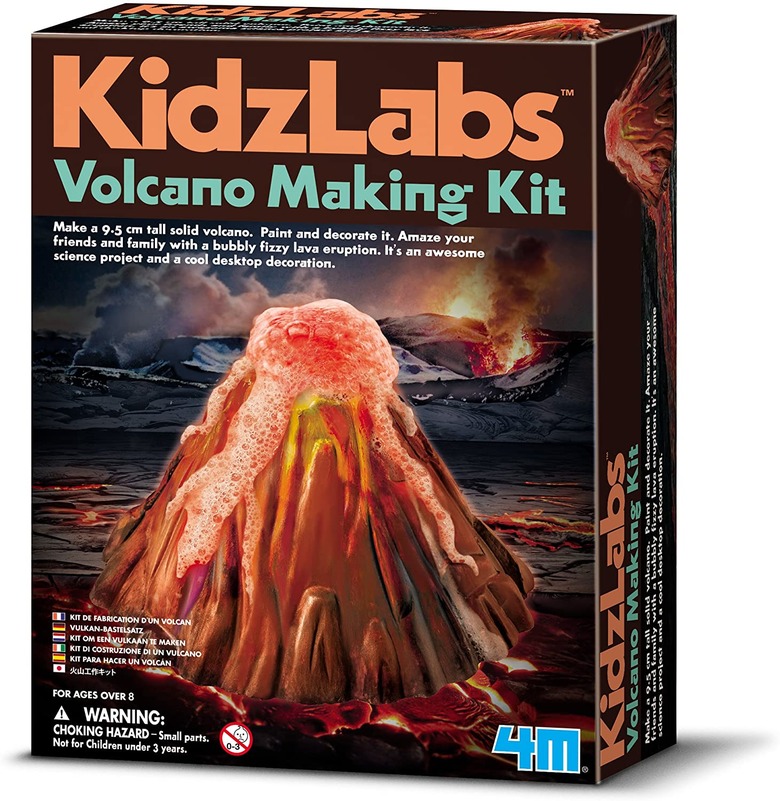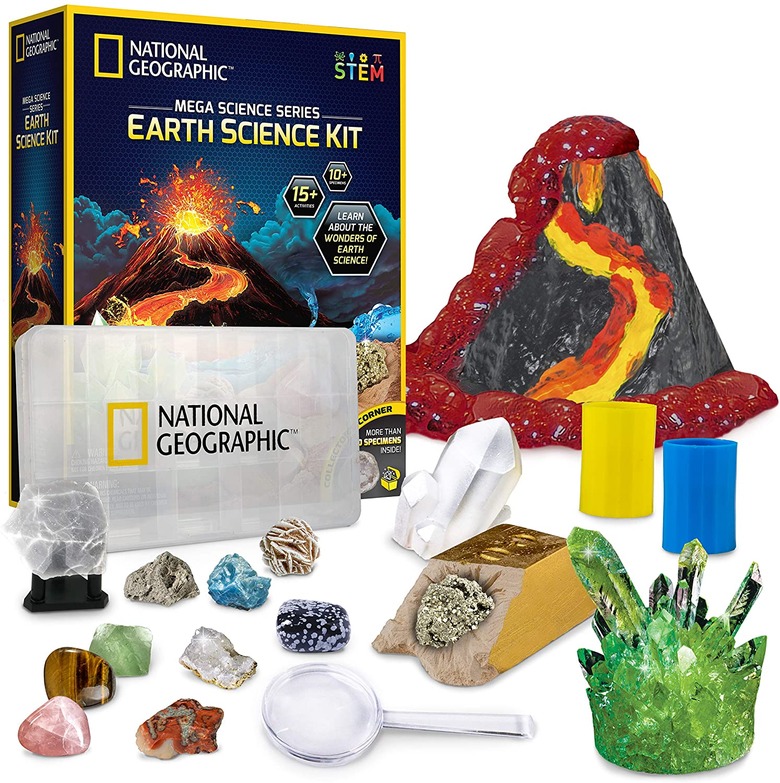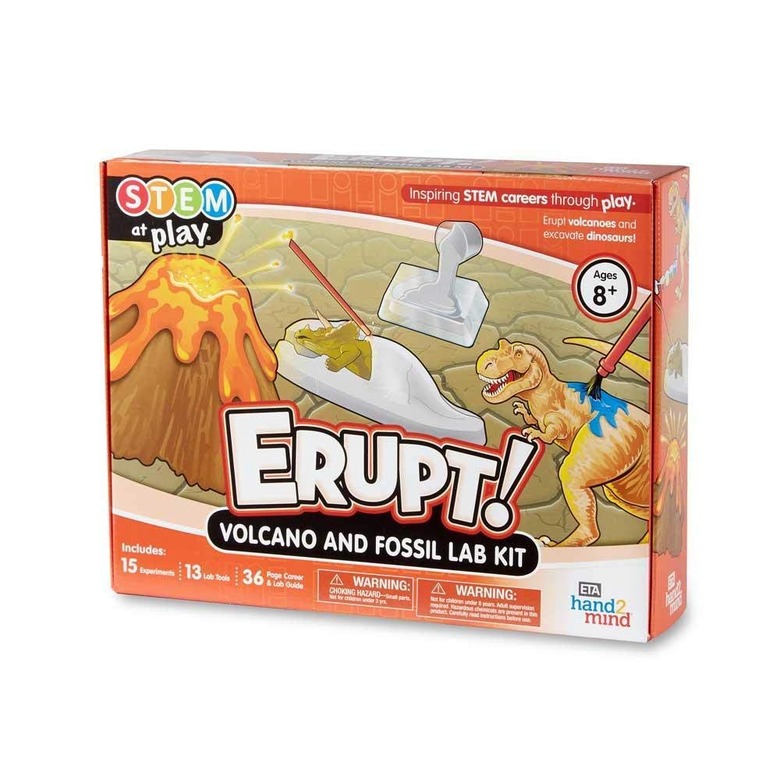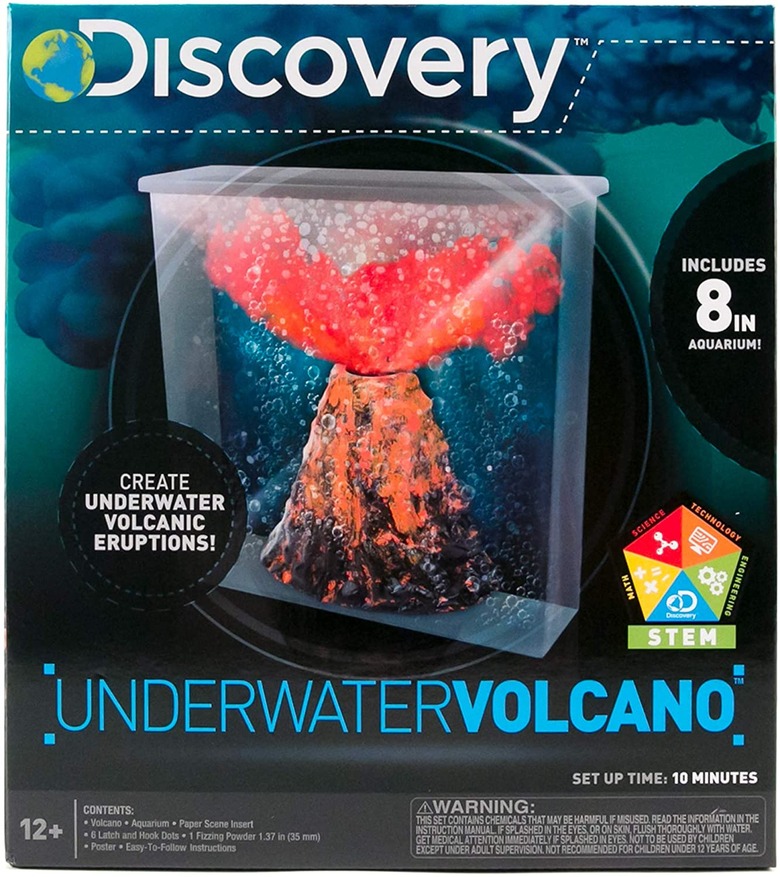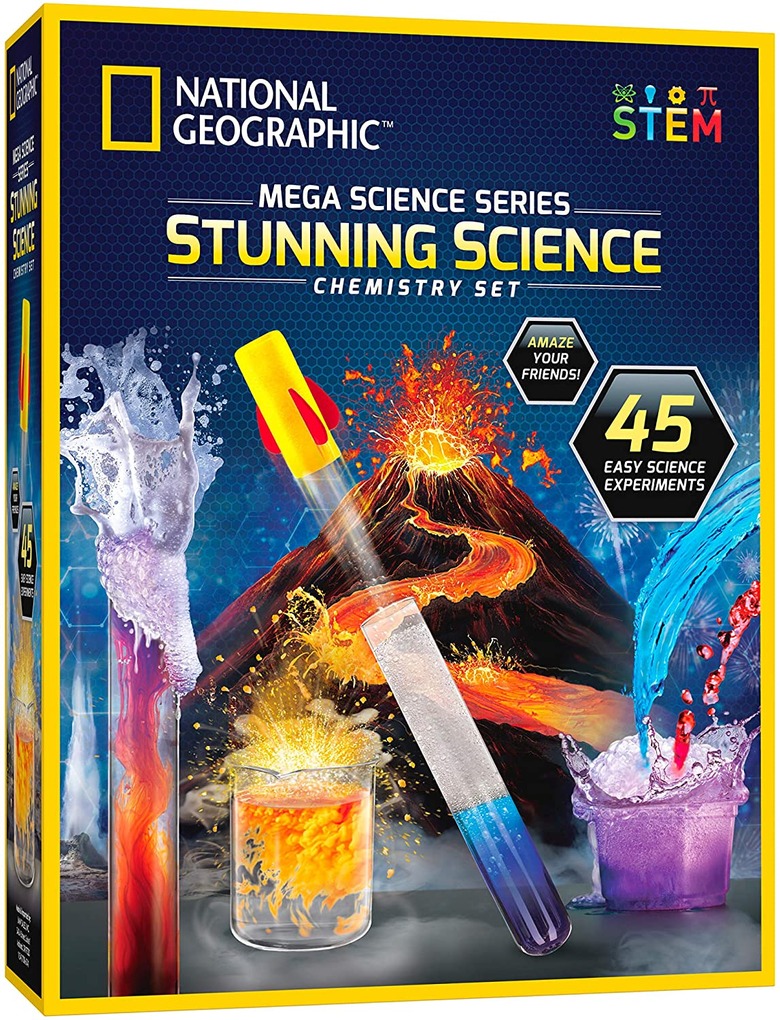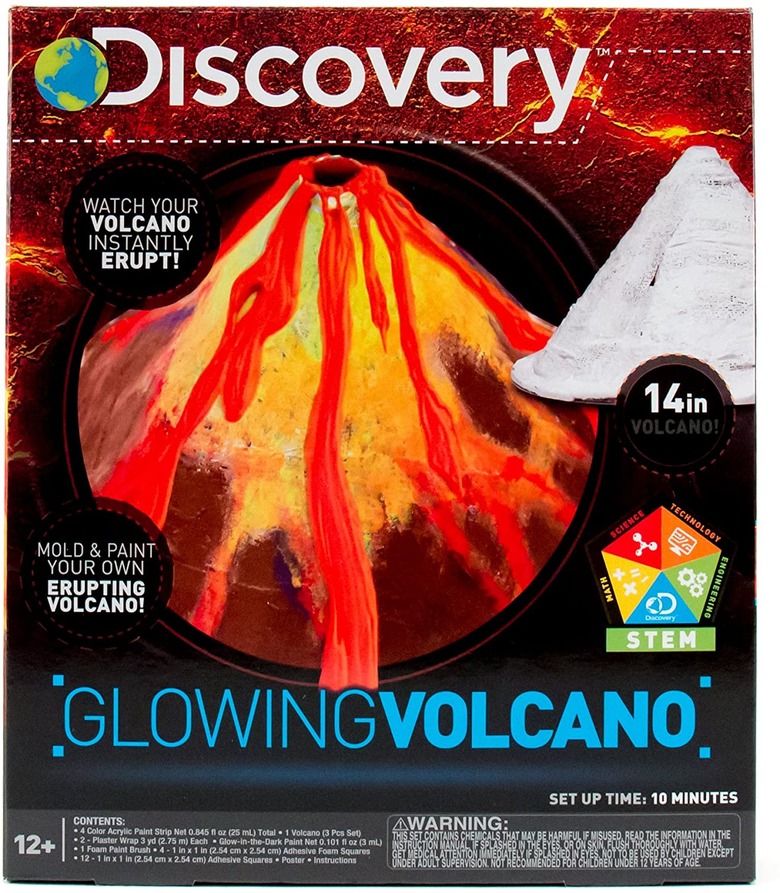Boom! Here's How To Create Your Own Volcanic Eruption At Home
We may receive a commission on purchases made from links.
Sciencing may earn compensation through affiliate links in this article.
Lava. When it comes to classic science fair material, a homemade volcano is a go-to. After all, it's got all the makings of a convenient science demonstration: it's simple to put together with household ingredients, it's generally pretty safe, and it has a massive visual payoff.
And if you're not familiar with the volcano demonstration, no worries: We've got the deets on exactly how it works, how to set it up at home with a science kit and some other volcano-related kits you'll love.
The Chemistry of the Volcano Experiment
The Chemistry of the Volcano Experiment
The volcano demonstration is based on a chemical reaction between two types of compounds: an acid and a base.
You can tell acids and bases apart by observing where they fall on the pH scale. If you don't know, the pH scale is a set of numbers ranging from 0 to 14. Substances with a pH under seven have an acidic pH – and the lower the number, the more acidic it is. Substances with a pH greater than 7 are considered basic, or alkaline. And the higher the number, the more basic it is.
Acids and bases have other distinguishing properties, too. Acids have a distinct sour taste. That's why many acidic foods – like lemons and limes – taste sour, and why vinegar has a sour tangy flavor.
Bases, on the other hand, taste bitter. You wouldn't want to eat most alkaline foods, like baking soda, all on their own. But if you did, they'd taste intensely bitter – yuck!
If a substance falls in the middle of the pH scale, or around 7, it's considered neutral. One good example is water, which doesn't taste either sour or bitter on its own.
So What Happens in a Volcano Experiment?
So What Happens in a Volcano Experiment?
The volcanic "eruption" happens when two household chemicals – vinegar and baking soda – combine.
Because vinegar is an acid and baking soda is a base, they react with each other. The chemical reaction produces a compound called sodium acetate, water and carbon dioxide.
And it's the carbon dioxide we're interested in. That's because carbon dioxide is a gas, and as more carbon dioxide is created, it forms bubbles of air within the solution. And because gas is much less dense than liquid, it also increases in volume.
So when you see the volcano experiment go off, you're actually watching carbon dioxide form and create rapidly expanding bubbles. These "erupt" out and away from the sodium acetate solution below, creating the flow of "lava" you see.
You'd get the same fizzy eruption if you combined baking soda and vinegar in a glass or test tube, but where's the fun in that? Adding red dye and doing the experiment in a volcano looks way, way cooler. This is why we love US&ref=as_li_ss_tl'>volcano science kits that make it easy to set up your volcanic eruption.
5 Other Fun Volcano Science Kits
5 Other Fun Volcano Science Kits
Loved that experiment? Try one of these earth science kits for more volcano-related fun.
References
National Geographic Earth Science Kit
This earth science kit comes with its own version of the volcano eruption experiment, as well as other fun experiments to try. Use the kit to grow your own crystal, and check out different types of minerals and rocks provided. You'll even find a "see through" rock that you can read through.
hand2mind Fossil and Volcano Science Kit
When real volcanoes go off, they can release rocks, lava – which solidifies into rock as it cools – and volcanic ash, which shoots up into the air and eventually settles onto the ground. These eruptions can change the ecosystem around them forever. In fact, a volcanic eruption is the most likely reason dinosaurs went extinct. This science kit lets you study volcanoes more in-depth. It'll help you model the layers of earth, and even dig up your own dinosaurs.
Discovery Under Water Volcano Eruption Kit
Fun fact: Real volcanoes erupt underwater too. Some release bubbles of lava, which cool into, well, bubble-shaped rocks. Others release gas, which can react with the water and form some pretty intensely acidic underwater ecosystems. This science kit will teach you all about underwater volcanoes, also called submarine volcanoes, and even let you simulate eruptions.
National Geographic Stunning Chemistry Set
If your fave part of the volcano experiment was getting to play with chemicals, this is the science kit for you. It has everything you need to perform 45 science experiments at home. There's the volcano experiment, of course, but you can also launch a rocket, use a chemical reaction to fill a balloon up with gas and create a geyser.
Discovery Kids Build Your Own Glowing Volcano Kit
If, on the other hand, you love building and painting, this glowing volcano science kit is sure to please. The experiment is the same – using the combination of vinegar and baking soda to set up an eruption – but this kit lets you get artistic actually building your volcano model. Create jagged "rocky" surfaces with the adhesive squares included in the kit, and use glow-in-the-dark paint to decorate your volcano with red-hot lava and fire.
A science experiment and a decoration for your room. How cool is that?
Cite This Article
MLA
Tremblay, Sylvie. "Boom! Here's How To Create Your Own Volcanic Eruption At Home" sciencing.com, https://www.sciencing.com/volcano-eruption-science-kit-13763821/. 31 March 2021.
APA
Tremblay, Sylvie. (2021, March 31). Boom! Here's How To Create Your Own Volcanic Eruption At Home. sciencing.com. Retrieved from https://www.sciencing.com/volcano-eruption-science-kit-13763821/
Chicago
Tremblay, Sylvie. Boom! Here's How To Create Your Own Volcanic Eruption At Home last modified August 30, 2022. https://www.sciencing.com/volcano-eruption-science-kit-13763821/
